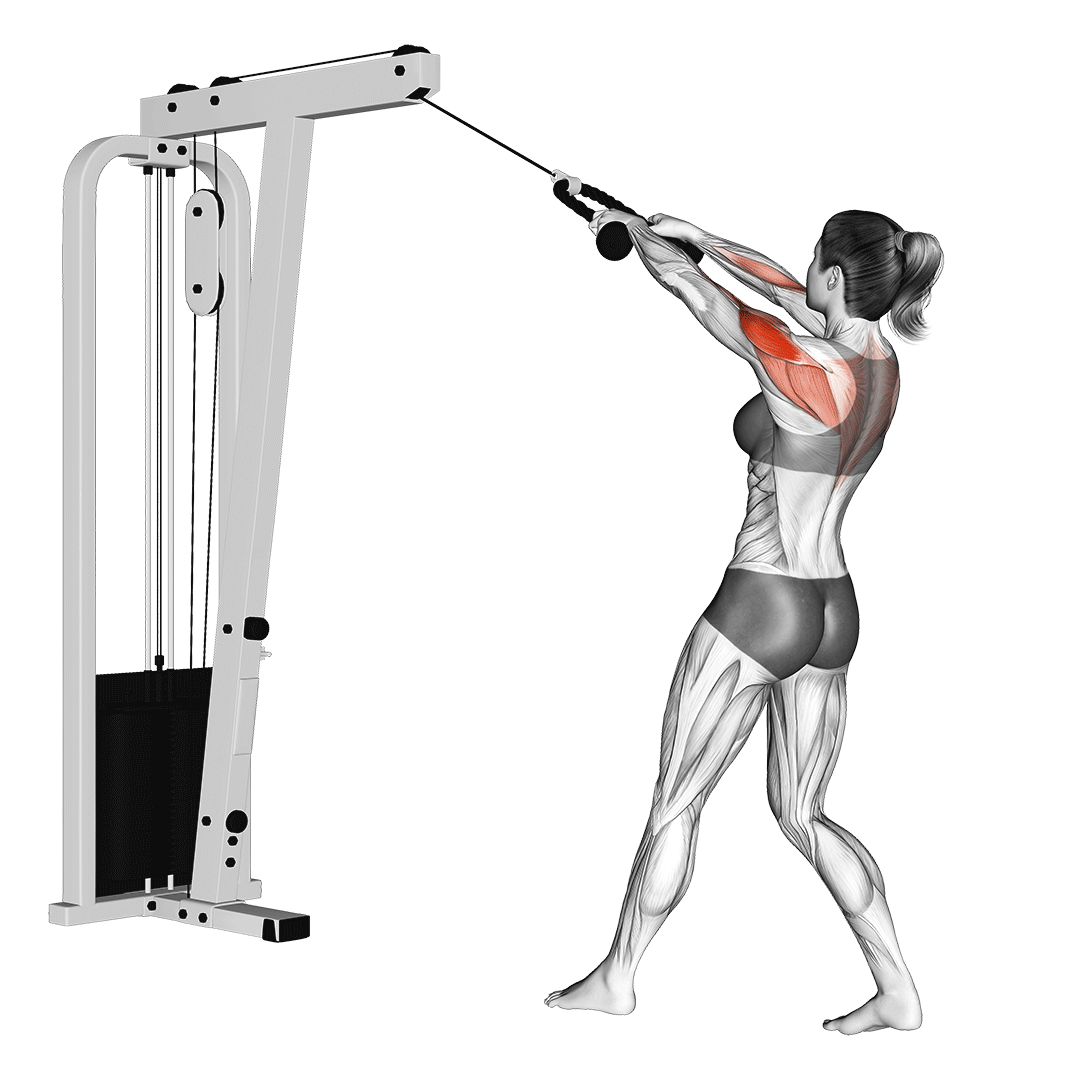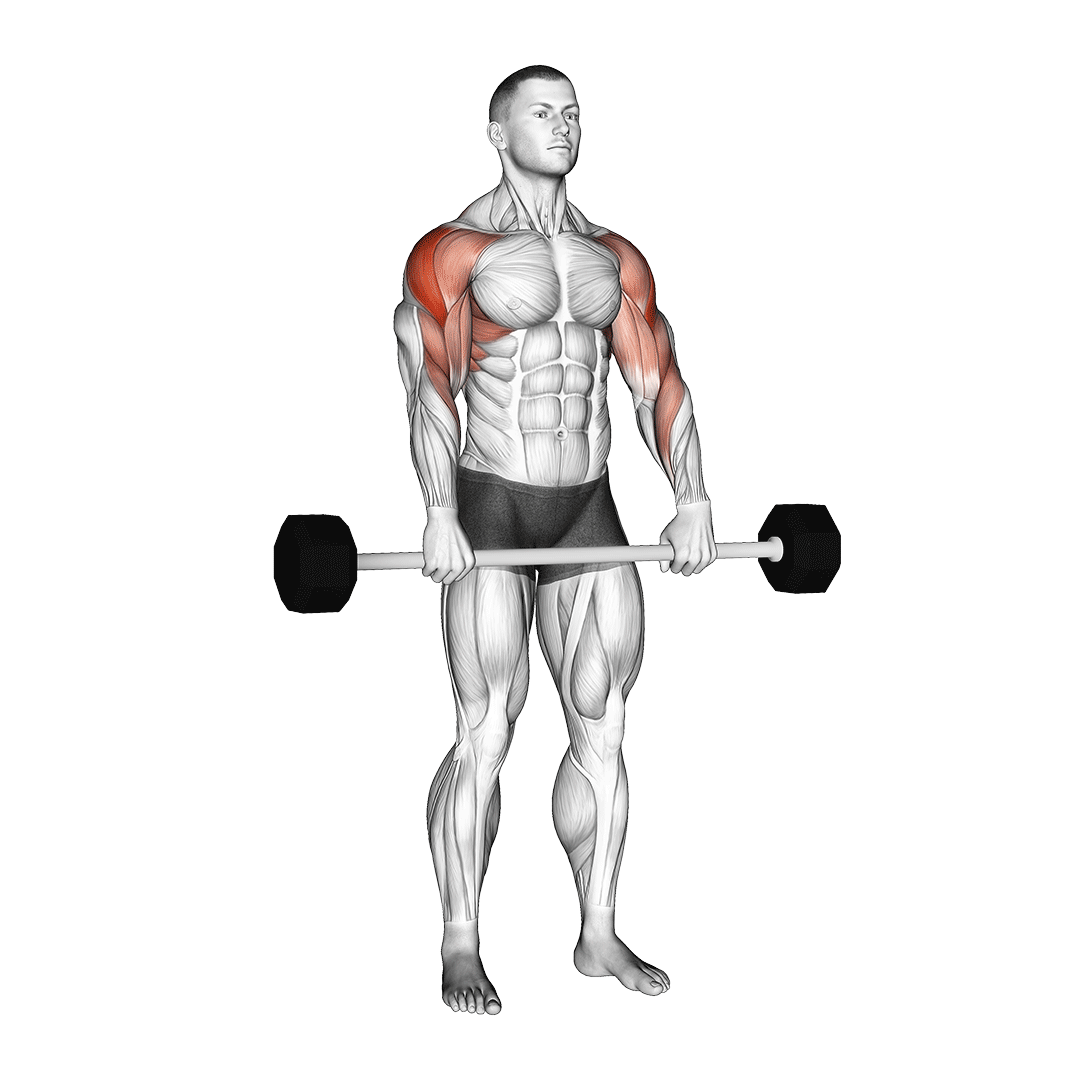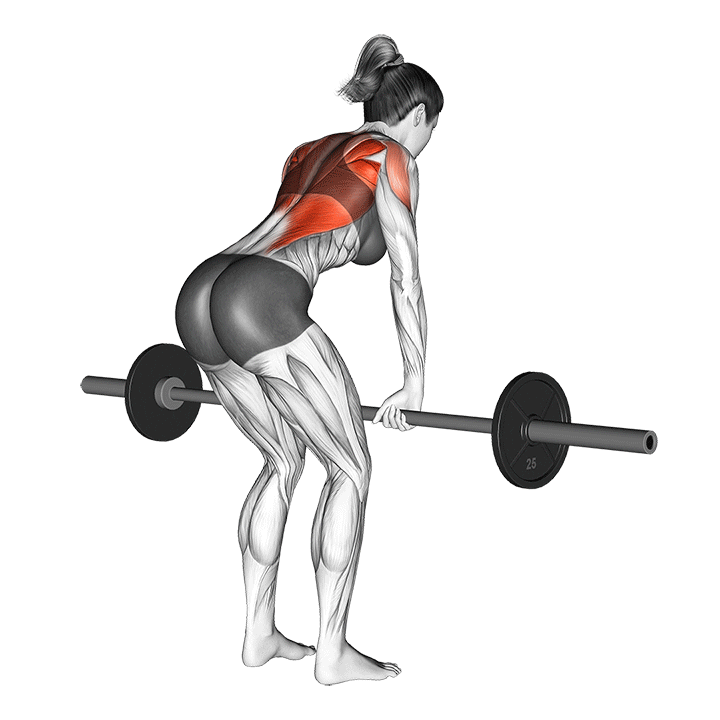Cable Rear Delt Row: Benefits, Muscles Worked, and More
The cable rear delt row, as its name suggests, is an upper-body compound exercise as it engages multiple muscles at once but is primarily meant to target the rear or posterior deltoids with the use of a cable machine.

It is an excellent workout that builds size and definition in the shoulders, traps, and upper back as well as encourages shoulder health and balanced development.
Muscles Worked by the Cable Rear Delt Row
The cable rear delt row is meant to primarily target the posterior deltoids. However, this exercise also engages other shoulder muscles such as the infraspinatus, teres minor, lateral deltoid, middle and lower trapezius, and rhomboids, and arm muscles such as the brachialis and brachioradialis as synergists to the movement. The biceps brachii acts as a dynamic stabilizer together with the rotator cuff muscles.

Furthermore, the muscles that are involved in gripping are activated, and thus strengthened as well. These muscles include both intrinsic and extrinsic finger flexors and wrist extensors.
Benefits of the Cable Rear Delt Row
Most workout routines often include pushing exercises that target the anterior and lateral delts, thus improving shoulder definition and muscle size in the front and side areas of the shoulder. Because of this, the posterior portion of the shoulder is often left out leading to muscle imbalance.
The cable rear delt row makes use of a cable that is pulled toward the chest in order to activate the rear delts.
According to a systematic review published in 2019, resistance training, such as the cable rear delt row, increases both strength and muscle hypertrophy. By increasing deltoid muscle size, the definition is enhanced in the shoulder area.
Muscle imbalance is also addressed by the cable rear delt row by focusing on an often neglected area. While this workout is a compound workout, it focuses more on the rear delts which are not activated by the more common pushing exercises such as the bench press.
Because muscle imbalance is addressed, muscle stability is thus improved by this exercise.
Alternative Exercises to the Cable Rear Delt Row
1. Barbell Upright Row
The lateral deltoids and the trapezius muscles are both built up with the use of the barbell upright row.
There are two variations of the barbell upright row that may be carried out, depending on whether the grip is tight or broad. The tight grasp puts more emphasis on the trapezius, whereas the broader grip places more emphasis on the whole shoulder.

To begin the exercise, the individual stands with the feet spaced shoulder-width apart. Hang a barbell in front of the body while grabbing it with an overhand grip that is set wide apart. Then, using the arms to assist and raise the shoulders, elevate the barbell until it is almost touching the chin.
It is important to keep in mind that while lifting weights, there should be no jump in order to avoid getting momentum from the legs. After the lift, return the barbell to its starting position in a controlled manner; this will count as one repetition.
2. Bent Over Rows
One of the most beneficial workouts for the back is the bent-over row; however, it is also one of the most challenging. This exercise will focus on strengthening the latissimus dorsi, posterior deltoid, scapular retractors, and trapezius muscles—specifically the lower and middle trapezius—as well as the rhomboids.

Holding the barbell with the palms towards the body and standing with feet spaced shoulder-width apart is a good starting position. Maintaining a straight arm position while gripping the barbell is required.
First, get into a kneeling position by bending the knees slightly, and then bend the upper body until it is parallel to the floor.
Raise the barbell by bending at the elbows, making sure that the elbows remain in a position that is always relatively near to the torso.
After the barbell has been raised to its maximum height, contract the muscles in the back and maintain that posture for a moment before beginning the process of decreasing the weight.
References
1. Krzysztofik M, Wilk M, Wojdała G, Gołaś A. Maximizing Muscle Hypertrophy: A Systematic Review of Advanced Resistance Training Techniques and Methods. Int J Environ Res Public Health. 2019;16(24):4897. Published 2019 Dec 4. doi:10.3390/ijerph16244897
